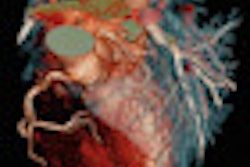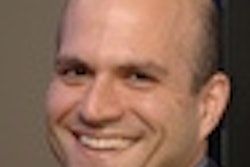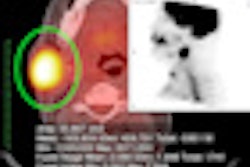What is happening with the proposed stage 2 meaningful use (MU) requirements? Not much has been said since the flurry of media coverage accompanied a preview of the new requirements by Dr. Farzad Mostashari, the U.S. national coordinator for health IT, at HIMSS in February. But now is the time to speak up.
Stage 2 represents the second of three stages of stimulus funding provided by the U.S. government to spur adoption of healthcare IT by physicians and hospitals who serve Medicare and Medicaid patients. As with stage 1, it consists of two sets of rules, one relating to clinical requirements, and the other to the technology that will make the first happen.
Now it is "incubation" and feedback time. The details of the notices of proposed rulemaking (NPRM) by the U.S. Centers for Medicare and Medicaid Services (CMS) and the Office of the National Coordinator for Health Information Technology (ONC) were published on March 7, 2012, in the Federal Register, and they don't make for easy reading or analysis. However, they are awaiting public comment, which must be submitted by May 7, 2012.
This is the time to speak up, and professional associations representing individuals and healthcare organizations that will be impacted are well into the process of analyzing what the proposed criteria mean, how they will impact their constituencies, what inconsistencies they have, what alternative options should be considered, and what new recommendations should be made. AuntMinnie.com discussed stage 2 with Michael Peters, director of regulatory and legislative portfolio at the American College of Radiology (ACR).
The ACR and other societies representing medical specialties have been lobbying CMS and ONC to expand their vision -- and their rules -- for converting their definition of healthcare "eligible providers" (EPs) from just primary care physicians to medical specialists, such as radiologists. The proposed new rules for stage 2 reflect this broader perspective. Even diagnostic imaging data is included.
"We were pleasantly surprised by the proposed imaging data access-related objective," Peters said. "We expected that the proposed rules would more closely reflect the recommendations made by the ONC Meaningful Use Workgroup to the HIT Policy Committee in June 2011, which did not contain this objective. That said, I would not be surprised to see this item removed from the future final rule."
The ACR is in the process of preparing responses to both NPRMs, which it intends to submit in May. The ACR has also prepared a 32-page draft summary of both the CMS proposed rules and the ONC 2014 edition of HIT certification criteria, standards, and implementation specifications. This summary explains the most important and relevant details that will impact radiologists.
High-level overview
Before focusing on items specific to radiologists, understanding key elements of the proposed stage 2 rules is beneficial. A recent brief prepared by Marie Coupoulos of the Advisory Board Company touches on some of the most important elements:
- An extension of time by one year for eligible providers who in 2011 attested in that they were meeting the stage 1 final rule requirements. CMS is proposing that EPs spend two years in each stage, but it is now recommending that EPs who attested in 2011 would remain in that category a third year until 2014.
- Stage 1 requirements will be updated so that they are more consistent with the program's strategic direction. Most but not all of the proposed Stage 1 revisions can be adopted in 2013 and will be required in 2014.
- The complexity of stage 2 measures is greater than those of stage 1, many of which have multiple parts.
- It will not be necessary to use a health information exchange (HIE) for information exchange. However, sharing of health data will force real-time, high-quality data capture, both to other providers and to patients. Patients will need to participate.
- A change in payment adjustment policy would mean that providers who attested in 2011 or 2012 would need to achieve stage 1 meaningful use in 2013 to avoid a payment adjustment in 2015.
- Providers may need to continue to demonstrate increasingly complex stages of meaningful use to avoid penalties.
An additional key trend identified by Peters included consolidation of patient information provision-related measures. This had been recommended by the ACR and will help all physicians. Also, exclusions from individual measures appear to be more flexible and useful.
Some specifics
"We are very pleased with the addition of imaging as one of five menu objectives in the CMS proposed criteria and in the proposed ONC EHR certification requirements," Peters said. The proposed rule for access to imaging results and information requires that the radiology records of more than 40% of all exams whose result is one or more images be accessible through certified EHR technology.
But there is ambiguity in some of the language relating to image access.
"It's not a bed of roses. The language assumes that the EP who is ordering a diagnostic imaging exam is the same EP who is interpreting the exam. While that may be the case for some specialties, such as dental, ophthalmology, and cardiology, it's not the case for radiology," Peters said. The ACR will be commenting upon this from the perspective of both the ordering and interpreting physicians.
The other item that is of the greatest importance from the ACR's perspective is the proposed redefinition of certified EHR technology in the ONC's NPRM. The ONC is proposing removal of the "comprehensiveness" requirement as part of the definition of certified EHR technology.
What this means is that a physician will not be required to purchase products that they don't need and will never need to use unless the functionality falls within a mandatory "base EHR" category of criteria. Currently with stage 1, for example, it is necessary to purchase certified electronic prescription software even if a radiology practice never writes a script.
"This item is huge, a change we'd been strongly recommending since 2009. Only implementing what is needed makes sense," Peters said. "We're also very pleased that the ONC proposal gets rid of the three product certification categories that now exist (general, inpatient, ambulatory) and combines them into a single list of certification criteria. It will be much less confusing for consumers and vendors of specialized HIT products."
However, ONC's base "bucket" of criteria is still too encompassing from ACR's perspective. Peters said that he felt it could be reduced somewhat and still meet statutory requirements. The other challenge, and a major point of confusion and contradiction, is that EPs can use products certified to the 2014 requirements, but that until 2014, those products be equivalent to all of the requirements of the 2011 rule. (That still means purchase of e-prescribing software.) The ACR will be recommending that the proposed redefinition of certified EHR technology be put into effect immediately.
Peters is also pleased about a new reference to hardship exemption criteria for some radiologists who are unable to participate in the meaningful use program but would be otherwise penalized. Physicians who have been practicing for fewer than two years and physicians who are unable to obtain sufficiently robust Internet access may apply for a hardship exemption.
But the CMS NPRM is also asking for comment about whether physicians who do not have face-to-face encounters with patients, who do not follow up with patients directly, and who do not have any influence in technology purchase decisions in their workplace be eligible for exemption.
The ACR would like to see these be implemented, with some improvements so that the latter exemption category could help any physicians who work predominantly in hospital settings where hospitals either are not planning to provide them with access to the technology or access to the data elements they need to participate in the meaningful use program.
Peters explained that CMS prepared this category prior to a meeting that representatives of the ACR, the Radiology Business Management Association (RBMA), and others had with CMS and ONC representatives in November 2011 and in January 2012.
"We hope that the dialogue we had about the problems that some physicians are having with this matter increase the understanding by CMS and ONC," Peters said. The ACR will likely recommend the removal of the "face-to-face" and "follow-up" hardship exemptions, to point out that while they may apply for some types of radiology specialists, they would not apply for interventional radiologists or radiation oncologists, or ACR's closest allies in other specialty societies.
Peters expressed excitement about the addition of menu-set measures to promote cancer registry and specialty society registration participation. The ACR and the American Society for Radiation Oncology (ASTRO) had been lobbying heavily for these features.
Also to be applauded is the recommendation that computerized physician order entry (CPOE) would include radiology orders as well as medications and laboratory tests. The ACR will be recommending the integration of clinical decision support software based on best-practice guidelines.
Approximately 125 clinical quality measures have been proposed by CMS. Peters said that about 15 or 16 are directly applicable to radiologists. He expects the final rule for stage 2 to include fewer, but hopes that the ones for radiologists will remain intact.
One of the more interesting proposed requirements is to provide more than 50% of all unique patients with timely (within four business days) online access to their health information, and that more than 10% of the patients view, download, or transmit this information to a third party.
For individuals who wish to comment to either CMS or ONC, Peters recommends that feedback be specific to proposed requirements.
"Unlike communicating with Congressional representatives, in which quantity of responses may be of greater importance than the quality of message, the reverse is true," he said. "The regulators who will be reviewing the information want to see detailed, merit-based arguments and advice."
Read the CMS proposed rules and make comments here. Read the ONC proposed rules and make comments here.



















